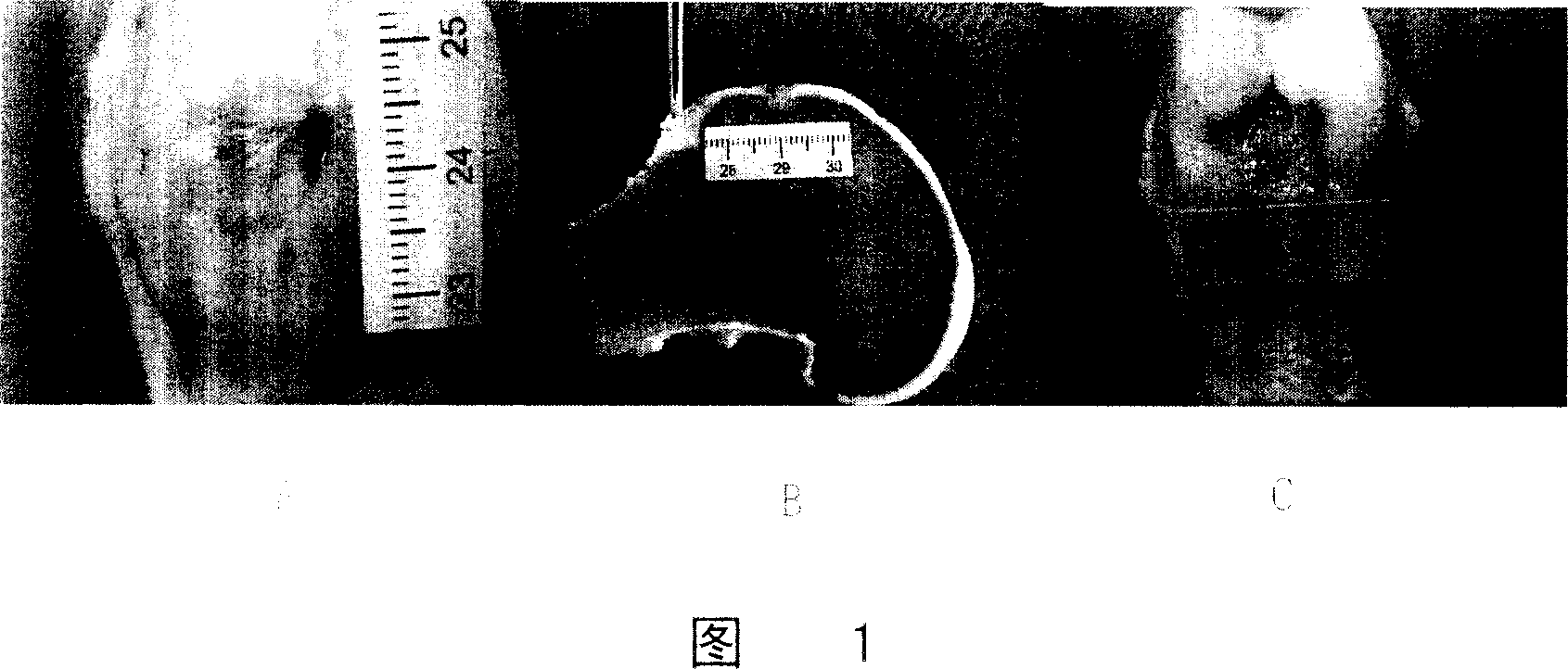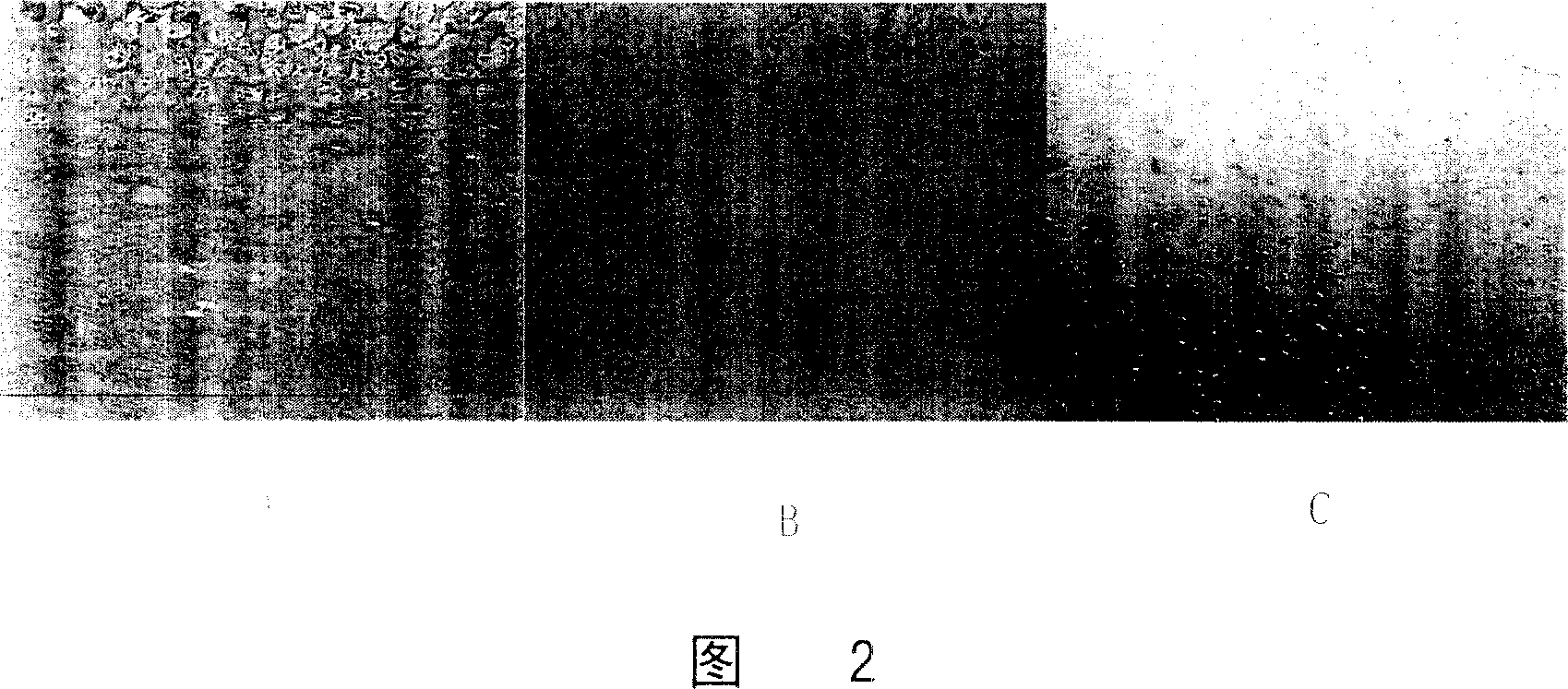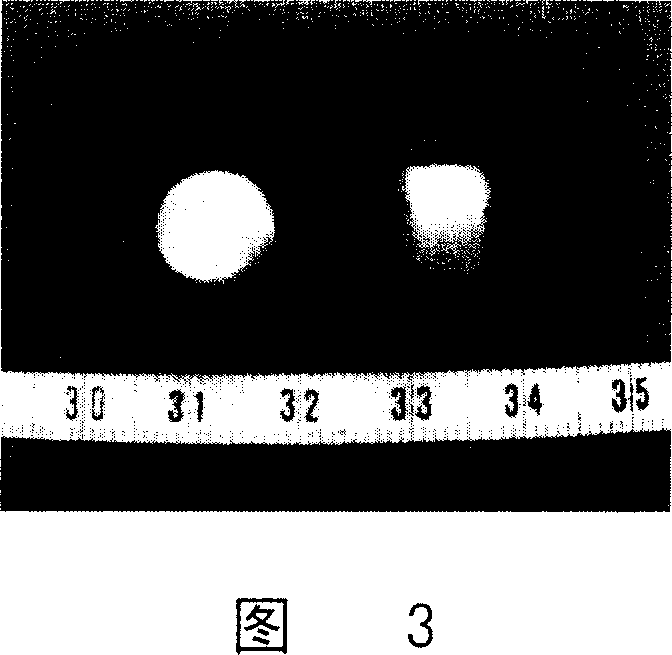Autologous fat stem cell constructing tissue engineering cartilage
A kind of fat stem cell, cartilage technology, applied in the field of medicine and biomedical engineering, can solve the problem of unsuccessful
- Summary
- Abstract
- Description
- Claims
- Application Information
AI Technical Summary
Problems solved by technology
Method used
Image
Examples
preparation example Construction
[0076] The preparation method of the tissue engineered cartilage of the present invention is simple and convenient, and a certain amount of seed cells are mixed with pharmaceutically acceptable biodegradable materials.
[0077] The shape of the tissue-engineered cartilage graft of the present invention is not particularly limited. Typically, the shape of the graft is the same or substantially the same shape as the mammalian cartilage defect. Take the graft similar to the shape of articular cartilage as an example, its volume is 0.02-6cm 3 .
[0078] When the biodegradable material of the present invention is an injectable material, adjust the concentration of chondrocytes with the liquid material; when the biodegradable material of the present invention is a solid material, adjust the concentration of the seed cell suspension with the culture medium, and then use the The degradable material is mixed. When mixing, the ratio of the culture medium to the degradable material is ...
Embodiment 1
[0091] Isolation and culture of adipose-derived stem cells
[0092] Obtain pig neck and back fat tissue under sterile conditions, shred it fully, transfer it into a centrifuge tube, add an equal volume of 0.075% type I collagenase for digestion, 37°C, 40min, add serum-containing culture medium to stop digestion, centrifuge at 1390r / min, 10min, discard the supernatant, filter with a 150-mesh cell strainer, and then centrifuge at 1390r / min for 5min, discard the supernatant, add low-sugar DMEM culture medium containing 10% fetal bovine serum to mix the cells, and divide 5×10 4 / cm 2 Inoculated at 100mm 2 cultured in a petri dish. After 24 hours, it can be seen that the spindle cells adhere to the wall. When the cells grow to nearly 80%-90% confluent at the bottom of the culture dish, they are digested with 0.25% trypsin + 0.02% EDTA, passaged, and continue to be cultured. The second generation of cells is collected for use Inoculation material.
Embodiment 2
[0094] Preparation of bioscaffold composite polylactic acid / polyglycolic acid (polylactic acid / polyglicolic acid, PLA / PGA, PLGA)
[0095] Method: Take about 40mg of non-woven PGA fiber and evenly embed it into a prefabricated cylindrical (9mm in diameter, 5mm in height) silica gel mold, add about 0.3ml of 1% PLA dichloroethane solution, and take it out and store it in vacuum after it dries naturally. . See Figure 3.
PUM
 Login to View More
Login to View More Abstract
Description
Claims
Application Information
 Login to View More
Login to View More - R&D
- Intellectual Property
- Life Sciences
- Materials
- Tech Scout
- Unparalleled Data Quality
- Higher Quality Content
- 60% Fewer Hallucinations
Browse by: Latest US Patents, China's latest patents, Technical Efficacy Thesaurus, Application Domain, Technology Topic, Popular Technical Reports.
© 2025 PatSnap. All rights reserved.Legal|Privacy policy|Modern Slavery Act Transparency Statement|Sitemap|About US| Contact US: help@patsnap.com



